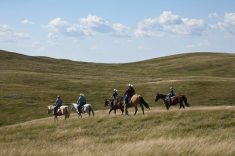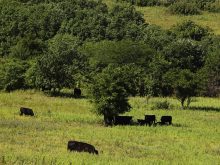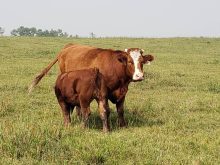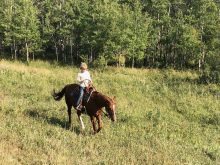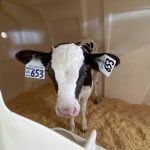Autumn is a busy time for the cow-calf operator.
After the spring calves are weaned, they may be sold or moved into drylot for backgrounding; the remaining brood cows are checked for pregnancy and soundness. Any animal that is deemed unprofitable should be culled before the new year.
Not too long ago, their salvage value was only worth a few hundred dollars, but in today’s record-high market, even a half-blind, smooth-mouth and open cow is worth significant dollars. Consequently, people should make up a cull list to take advantage of this revenue stream, while also improving the integrity of their cow herd.
Read Also

White House comments and larger supplies pressure cattle market
White House comments on increasing imports and larger supplies pressure the cattle market in North America, Jerry Klassen observes.
All mature cows, first-calf heifers or replacement females that cannot get pregnant or are open should top everyone’s cull list. Infertile cows simply cannot produce a money-making calf for next year. That is the strict opinion of my friend, who operates a 400-head Angus-Simmental cow herd.
I asked him if there were any exceptions to his number one rule of culling open cows. He replied that even if she were the best cow in the herd and was guaranteed to re-breed the next season, she is clearly a depreciated item:
- She did not give birth to a calf that generates his main income,
- She will then incur at least a $3 per day bill for overwinter feed and housing costs (200 days) or $600 of liability, and
- At least she is worth a few thousand dollars in today’s cull market.
The funny thing is that it might not be her fault in the first place. His story continues: much of his cow herd breeding season falls during the hottest days of summer and many cows (as well as breeding bulls) having suffered from heat-stress-related infertility.
My friend says it’s unfortunate, but these cows must be culled for cited economics — not to mention that he has no time, room or interest in creating a pregnant fall-calving herd.
Another producer I know operates a 250-head cow-calf operation, several hundreds of kilometres to the east of my first friend. He has similar views on culling infertile cows, but is ‘open’ (pun intended) to giving a handful of non-pregnant mature cows a second chance. He writes their ear tag number under a ‘maybe’ column on his cull list.

These ‘maybe’ candidates are healthy mature cows that have proven to be good nursing mothers in the past year that have turned out good 600-pound weaned calves by autumn. Given that she might eat $600 worth of overwinter feed until the next breeding season, this producer is willing to take a chance to successfully breed her next year to yield a feeder calf, which is worth nearly $4,000 ($650 per hundredweight) in today’s market.
These two friends sell their cull cows shortly before the end of the year. However, I met a third person who runs a 300-head Hereford crossbred operation and takes a slightly different approach.
He culls his cow herd twice a year. The first culls consist of about 30 open cows after the calves are weaned, and the second group is 15–20 individuals, put together within weeks after the calving season ends — hard calvers and cows that are breeding season stragglers. All cull cows are put in their own pen during an 80-day feeding program to gain 250 lb. and then sold at cull-cow prices.
All three beef producers above cull cows due to infertility; however, there are secondary reasons why brood cows might be sold. Some of these reasons are:
- Old age. As brood cows reach 10 years, their bodies break down, worn-down teeth (smooth-mouth), teats and udders collapse, uterine infections and general lameness are inevitable. They are more susceptible to disease.
- Poor nursing cows. Cows with poor milk production (which translates into poor growing calves) should be culled. One obvious goal of most commercial herds is to maximize total saleable weaned weight of their annual calf crop.
- Rough calvers. Some cows seem to have several hard-calving seasons — a calf has to be pulled or the cow has a prolapsed vagina, retained placenta, milk-fever or serious uterine infections.
- Poor cow health. Some cows are more susceptible to health challenges compared to other cows. Cows with a contagious disease or identified as disease carriers should be removed. Cows with chronic health problems might be culled.
Regardless on the reasons that any cow is culled from its herd, I believe there is at least a 10-15 per cent cull rate on most cow-calf operations.
All of these culls should be replaced by a young, healthy, good milking and promising mother — namely, a bred first-calf replacement female. Soon, she should give birth to a strong, good-growing spring calf, which is sold the following fall as a heavyweight money-maker.





